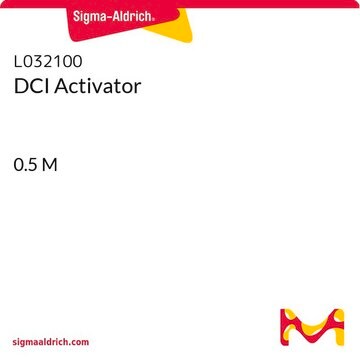86631
Tetraethylammonium hydroxide solution
~25% in methanol (~1.5 M)
Sinónimos:
TEA hydroxide
About This Item
Productos recomendados
Formulario
liquid
Nivel de calidad
concentración
~25% in methanol (~1.5 M)
trazas de anión
sulfate (SO42-): ≤1000 mg/kg
grupo funcional
amine
cadena SMILES
[OH-].CC[N+](CC)(CC)CC
InChI
1S/C8H20N.H2O/c1-5-9(6-2,7-3)8-4;/h5-8H2,1-4H3;1H2/q+1;/p-1
Clave InChI
LRGJRHZIDJQFCL-UHFFFAOYSA-M
¿Está buscando productos similares? Visita Guía de comparación de productos
Descripción general
Aplicación
Palabra de señalización
Danger
Frases de peligro
Consejos de prudencia
Clasificaciones de peligro
Acute Tox. 3 Dermal - Acute Tox. 3 Inhalation - Acute Tox. 3 Oral - Eye Dam. 1 - Flam. Liq. 2 - Skin Corr. 1B - STOT SE 1
Órganos de actuación
Eyes,Central nervous system
Código de clase de almacenamiento
3 - Flammable liquids
Clase de riesgo para el agua (WGK)
WGK 3
Punto de inflamabilidad (°F)
49.5 °F
Punto de inflamabilidad (°C)
9.7 °C
Equipo de protección personal
Faceshields, Gloves, Goggles, type ABEK (EN14387) respirator filter
Elija entre una de las versiones más recientes:
¿Ya tiene este producto?
Encuentre la documentación para los productos que ha comprado recientemente en la Biblioteca de documentos.
Los clientes también vieron
Nuestro equipo de científicos tiene experiencia en todas las áreas de investigación: Ciencias de la vida, Ciencia de los materiales, Síntesis química, Cromatografía, Analítica y muchas otras.
Póngase en contacto con el Servicio técnico










